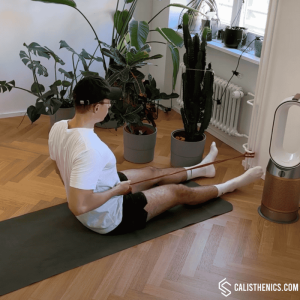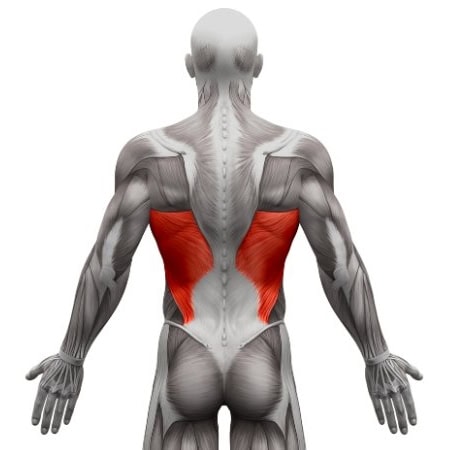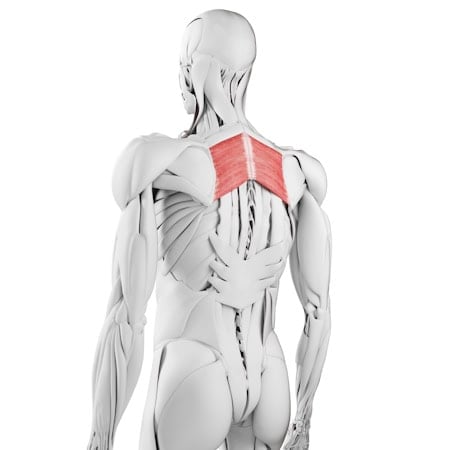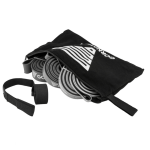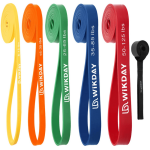Single Arm Seated Resistance Band Rows - Anchored
How to do Single Arm Seated Resistance Band Rows - Anchored?
Single-arm seated resistance band rows are a unilateral back exercise that targets the lats, mid-back, and shoulders, with the added benefit of engaging the core to maintain balance. This exercise is performed while sitting on the floor, using a resistance band anchored in front of the body. By isolating each arm, this movement helps correct muscle imbalances, build back strength, and improve posture. It is also a great way to develop coordination and stability.
Steps to Perform a Proper Single-Arm Seated Resistance Band Row:
1. Anchor the Resistance Band:
• Secure a resistance band to a stable anchor point in front of you (e.g., a door anchor or sturdy fixture).
• Sit on the floor with your legs extended straight out or slightly bent, facing the anchor.
2. Grip the Band with One Hand:
• Grab the handle or end of the band with one hand, keeping your arm extended so there’s slight tension in the band.
• Sit up tall with your chest lifted, shoulders back, and core engaged.
3. Position Your Body and Engage the Core:
• Keep your back straight and your shoulders level, resisting any twisting motion.
• Flex your feet, pressing your heels into the floor for stability. Place your non-working hand on your hip or thigh for support.
4. Pull the Band Toward Your Torso:
• Exhale as you pull the band back toward your torso, leading with your elbow and squeezing your shoulder blade toward your spine.
• Keep your elbow close to your body, pulling back until your hand reaches your side or just past your ribcage.
5. Return to the Starting Position:
• Inhale as you slowly extend your arm back to the starting position, keeping control and tension in the band.
• Maintain core engagement and avoid any rotation as you release the band.
6. Switch Sides:
• Complete the desired number of repetitions on one side, then switch to the other arm and repeat the movement.
Benefits of Single-Arm Seated Resistance Band Rows
• Corrects Muscle Imbalances: Working one arm at a time allows you to focus on each side independently, helping to correct any muscle imbalances.
• Improves Posture: By strengthening the muscles that pull the shoulders back, this exercise can help improve posture and reduce slouching.
• Builds Back Strength: This exercise targets the lats, rhomboids, and trapezius, helping to build a stronger, more stable upper and mid-back.
• Enhances Core Stability: The unilateral movement requires core engagement to prevent rotation, promoting stability and balance.
• Low-Impact on Joints: This exercise is gentle on the joints, making it suitable for individuals with shoulder or elbow concerns.
• Portable and Versatile: Resistance bands are lightweight and portable, allowing you to perform this exercise at home, in the gym, or while traveling.
• Functional Strength: Single-arm rows improve functional pulling strength, which translates to better performance in activities that involve lifting or pulling.
Common Mistakes to Avoid
• Rotating the Torso: Avoid twisting your torso as you pull the band. Keep your core tight to stabilize your body and maintain a straight line.
• Using Momentum: Avoid using momentum to pull the band. Focus on slow, controlled movements to engage the back muscles effectively.
• Shrugging the Shoulder: Keep your shoulder down and avoid shrugging it up toward your ear, which can lead to tension in the neck.
• Slouching or Leaning Back: Keep an upright posture with your back straight, avoiding any backward leaning that could reduce muscle engagement.
• Releasing the Band Too Quickly: Control the movement as you extend your arm back to the starting position, keeping tension on the muscles throughout.
Tips for the proper execution of Single Arm Seated Resistance Band Rows - Anchored
Engage the Core: Keep your core tight to stabilize your torso and prevent any twisting or rocking.
Sit Tall: Maintain an upright posture with your chest lifted and spine straight to maximize muscle engagement.
Control the Movement: Avoid using momentum; pull slowly and with control to ensure the back muscles are properly engaged.
Breathe Steadily: Exhale as you pull the band toward your torso and inhale as you return to the starting position. Steady breathing helps maintain rhythm and focus.
Focus on Shoulder Blade Movement: Concentrate on squeezing your shoulder blade toward your spine as you pull to fully engage the mid-back muscles.
Muscles worked when doing Single Arm Seated Resistance Band Rows - Anchored
Latissimus Dorsi (Lats): The lats work to pull the arm back and assist with shoulder extension.
•Rhomboids: These muscles between the shoulder blades help with scapular retraction, pulling the shoulder blade toward the spine.
•Trapezius: The middle trapezius stabilizes the shoulder blades and assists in retracting the scapula during the pull.
Secondary Muscles:
•Rear Deltoids: The rear portion of the shoulder helps stabilize the arm during the row.
•Biceps: Assist with elbow flexion during the pull.
•Forearms: Help maintain grip on the band.
•Core: Engaged to prevent any twisting or rotation, stabilizing the torso.
•Lower Back: The erector spinae muscles work to maintain an upright posture.
Primary Muscle(s):
Secondary Muscle(s):
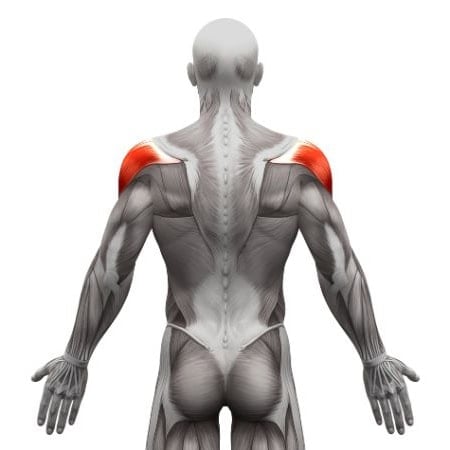
Rear delt
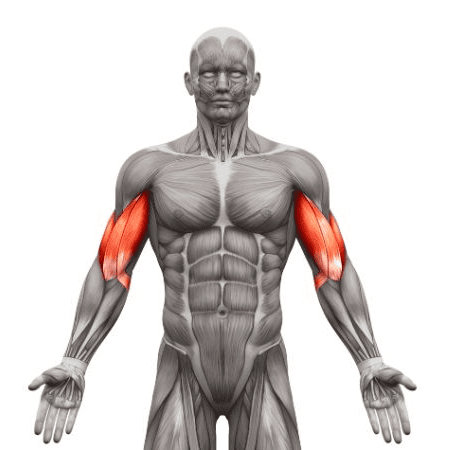
Biceps
Adjust the difficulty of Single Arm Seated Resistance Band Rows - Anchored
How to make Single Arm Seated Resistance Band Rows - Anchored harder?
How to make Single Arm Seated Resistance Band Rows - Anchored easier?
How to make Single Arm Seated Resistance Band Rows - Anchored harder?
To make Single Arm Seated Resistance Band Rows - Anchored harder:
-
Use a Heavier Resistance Band: Increase the difficulty by using a band with more resistance to further challenge the back and arms.
-
Increase Distance from Anchor: Sit farther from the anchor point to increase tension in the band, making the movement more challenging.
-
Add a Hold at the End of the Row: Pause for 2-3 seconds when your hand reaches your torso to increase time under tension and fully engage the back muscles.
-
Increase Repetitions or Sets: Perform more repetitions or additional sets to increase endurance and strength.
How to make Single Arm Seated Resistance Band Rows - Anchored easier?
To make Single Arm Seated Resistance Band Rows - Anchored easier:
-
Use a Lighter Resistance Band: Start with a band that provides less resistance, making it easier to maintain proper form.
-
Sit Closer to the Anchor: Reduce the distance from the anchor point to decrease band tension, making the exercise more manageable.
-
Limit Range of Motion: Perform partial rows by pulling only halfway to reduce intensity and build strength gradually.

